The gym can be an intimidating place, especially for beginners. Strong guys and gals that look like they could curl your entire body weight seemingly move through the gym as if they own the place, dominating the weight benches and cardio machines.
Most notably, they talk with one another using all sorts of gym lingo and gym terminology, using workout slang and gym terms you’ve never heard of.
Even when someone from the alpha group tries to welcome you in and ask about your “gains” and show you the ropes, they might speak so fluently with gym terms that you can hardly understand the conversation or feel like you need Google Translate to fit in.
There’s a surprising number of gym terms and workout lingo, and if you’re just starting out, this compendium of gym terminology makes the first few visits to the gym all the more confusing and intimidating.
Therefore, we’ve created a gym slang glossary with some of the most frequently used gym terms just for you. Get ready to impress your new gym mates with your sudden gym lingo fluency.

Common Gym Terms
#1: AMRAP
AMRAP is a workout acronym popularized by the CrossFit circuit, though it is used in any strength training program. It stands for “as many repetitions as possible,” which means that instead of performing a certain number of reps in a set, you either do as many as possible in a given amount of time (like 30 or 60 seconds) or truly as many as you can do to failure.
For this reason, AMRAP workouts are as metabolically- and cardiovascularly demanding as they will be for your muscles.
#2: ATG
ATG is an acronym that stands for “ass to grass” and refers to squatting as low as possible, with your thighs below parallel. The better the mobility in your ankles and hips, the more likely you can get a super deep squat.
#3: Beast Mode
When you’re in beast mode, all of your training is going right, and your focus is on point. You are giving it your all.

#4: Bulking
Bulking is mainly used in bodybuilding circles to describe trying to focus your diet toward gaining muscle mass.
The “bulking” phase doesn’t entail following a specific diet but rather any sort of caloric surplus diet that can help you gain weight (mainly muscle).
#5: Cheating
Cheating is never a good thing: in life, the gym, or your diet.
In terms of workout lingo, cheating usually means you are using the wrong form to eke out extra reps by using improper technique.
For example, if you are doing pull-ups, you might cheat by not fully extending your elbows on the way down.
A related piece of gym lingo often thrown around is “cheat meal,” which refers to eating a meal or snack that deviates from what is normally prescribed on your diet plan.
For example, if you are following a strict caloric-restriction diet for “cutting” or losing weight, a cheat meal might be a big buffet large with 1500 calories.
Related: Top 30 Funniest Gym Quotes

#6: Concentric
Most weightlifting exercises have two primary phases to the movement; the lifting phase, where you raise the weight up by bending your joint, and the lowering phase, where you extend the joint.
The lifting phase is the concentric phase, such as when you do bicep curls and bend your elbow to bring the weight to your shoulder.
#7: Cycle
A cycle refers to a period in your training plan geared towards a given goal. It’s usually at least several weeks long, but cycles can be described as microcycles, mesocycles, and macrocycles.
#8: Cutting
Cutting is the opposite of bulking in terms of diet.
The cutting phase is the difficult phase of the bodybuilding diet that entails restricting calories to try and lose additional body fat and better meet physique goals or qualify for a lower weight class.

#9: Deloading
Deloading refers to a period in the training plan where you decrease the intensity or volume of training to help recover from peak periods of hard training.
#10: DOMS
DOMS is short for Delayed Onset Muscle Soreness, which refers to the muscle soreness you experience in a day or two following a hard workout.
#11: Drop Set
A drop set is an advanced strength training technique designed to maximize potential hypertrophy or muscle growth. It involves a set of a given exercise until failure, then reducing the weight or resistance that you are using by 10 to 30% and then immediately beginning another set, again until failure.
As soon as this occurs, in most cases, you then drop the resistance one more time (by another 10-30%) and complete one final set to failure with the lightest load. There is no rest in between sets, aside from the time it may take to grab the lighter weight.
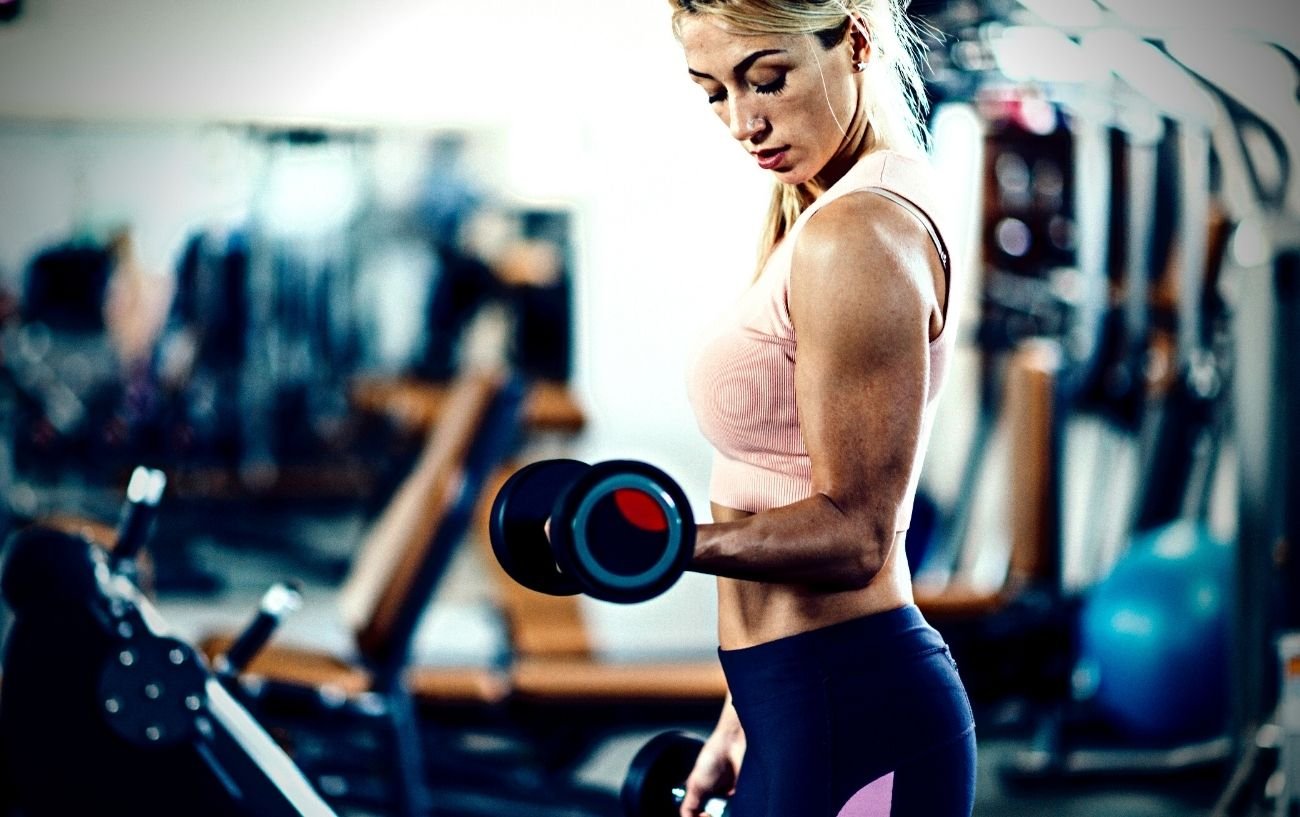
#12: Eccentric
Eccentric is the portion of the strength training exercise where you lower the weight back down (the opposite of concentric).
#13: Gains
Probably the most common entry into any gym terms glossary is “gains,” which really just denotes the progress you’ve made in the gym.
The gym word “gains” is almost always used in terms of building muscle mass (also called hypertrophy) and muscle strength, but it can also refer to improvements in any aspect of fitness, including cardio.
#14: Guns
This classic piece of gym lingo refers to your muscles—usually your biceps.
#15: Gym Rat
A gym rat is someone who spends a lot of time, energy, and focus on their workouts and often talks extensively about their fitness plan.
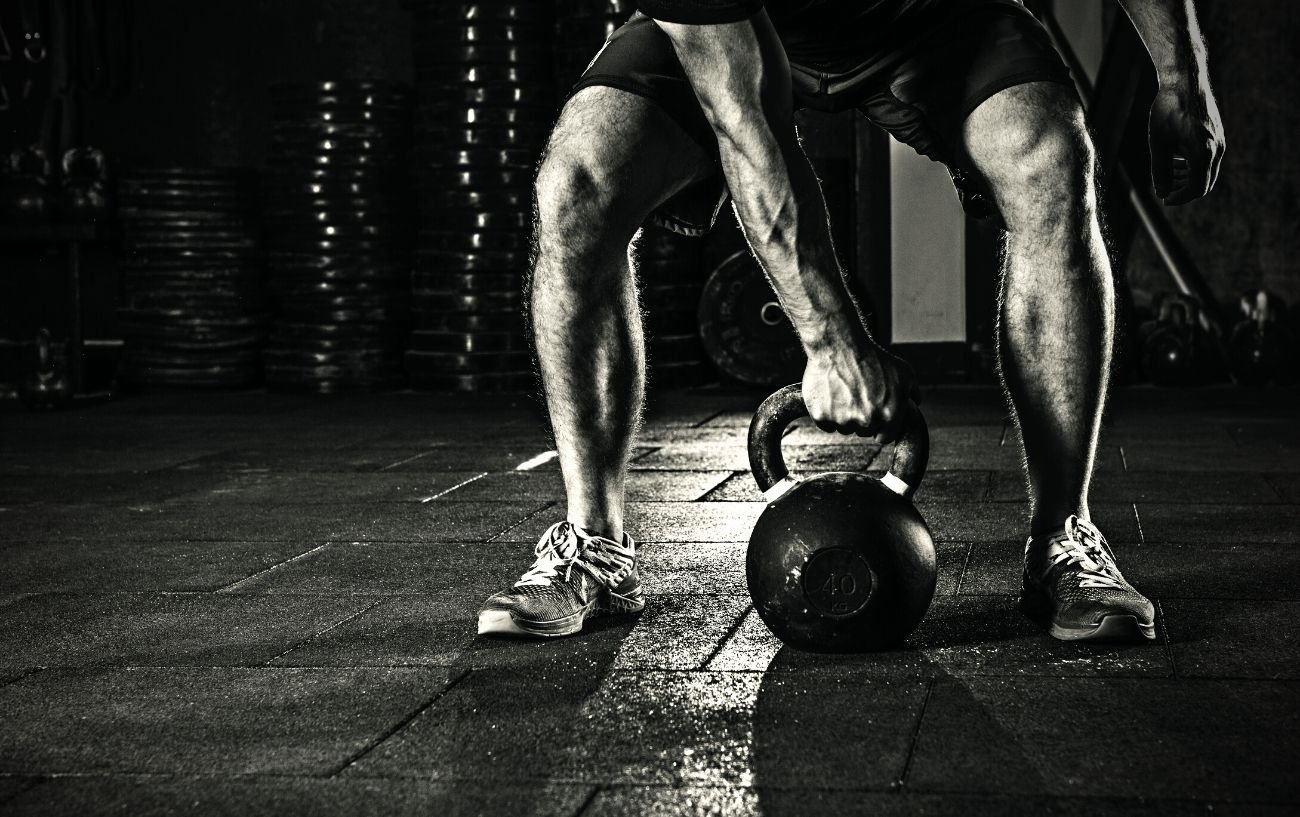
#16: Isometric
An isometric exercise is a static hold. Your muscles are still doing work, but no joint movement is occurring. An example of a common isometric exercise is the forearm plank.
#17: Jacked
Jacked is somewhat like “swole” in that it refers to someone with a lot of muscle mass, but typically someone who is jacked has slightly less body fat than someone who is swole.
#18: Load
The load is the amount of weight that you lift for an exercise. For example, if you squat holding two 25-pound dumbbells, the load is 50 pounds.
#19: Macros
Macros is a gym slang term used in the bodybuilding circuit as shorthand for “macronutrients,” to describe how much protein, fat, and carbohydrates you are or aren’t eating in your diet.
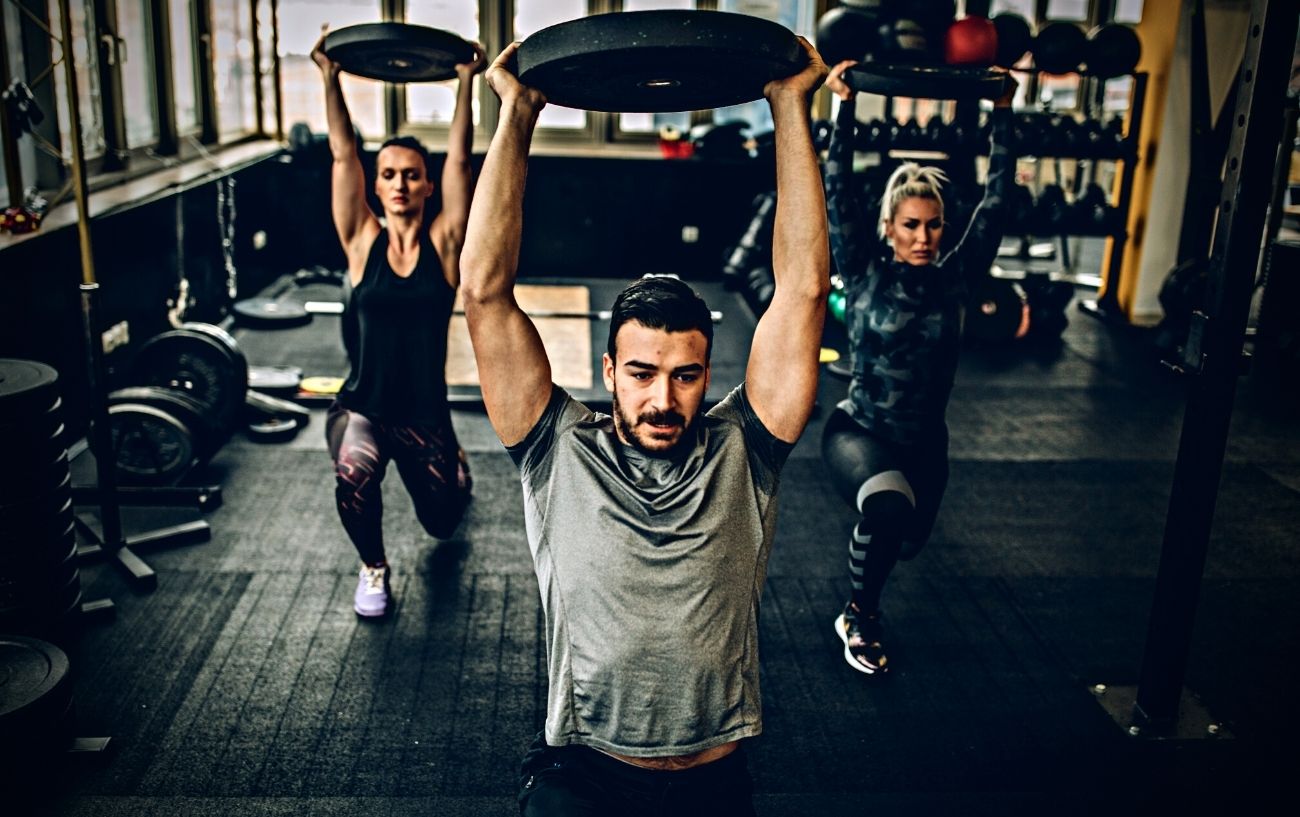
#20: Mirin’
Mirin’ is a bit of an esoteric piece of gym lingo used by bodybuilders that is shorthand for “admiring,” which is a way of congratulating a fellow lifter on his or her physique or strength.
#21: One Repetition Maximum
Usually abbreviated to 1RM, your one-repetition maximum is the most amount of weight you can lift for a given exercise.
#22: Plates
Plates refer to the disc-shaped weight plates that you load onto a barbell.
#23: PR
A PR stands for a “personal record.” A PR can refer to your heaviest lift, your fastest mile, etc.
#24: Pump
Muscle pump is a gym word used to describe the gain in size your muscles get when you flex, and they fill with blood, which inflates the tissue.

#25: Rep
This is certainly a need-to-know piece of workout slang.
Short for “repetition,” a rep is one complete movement of a given exercise. For most strength training exercises, this would entail beginning at the starting position, lifting the weight up, and then lowering the weight all the way back down.
#26: Ripped
Most people are familiar with this gym slang term, which basically just denotes someone having a muscular, toned, defined physique. Someone who is ripped also has a low body fat percentage, so they might be lean overall but still muscular.
#27: Set
Another essential workout term is “set.“ This refers to a group of repetitions of a single exercise performed together. For example, a set of squats might include 10 repetitions of squats performed back to back before taking a break.

#28: Spotter
This is an essential piece of gym terminology that you will need for safety. A spotter is someone who assists you during your heavy lifts, not by necessarily aiding in the exercise directly, but by standing there in a ready position to help you rack and unrack the bar and help you out if you’re trying to max out and can’t perform the lift.
You should not attempt heavy lifts on your own, such as bench press or squats, without a spotter.
#29: Superset
A superset is an effective strength training technique that involves performing two different exercises immediately after one another without taking a rest in between. You might perform exercises that target the same muscle groups or opposing muscle groups.
For example, you might do 10 push-ups followed immediately by 10 pull-ups. This superset targets opposing muscles but would increase the overall difficulty of your workout by reducing rest.
#30: Swole
Swole refers to someone with a bulky, hefty build. They may be muscular but may also have a fair amount of body fat.
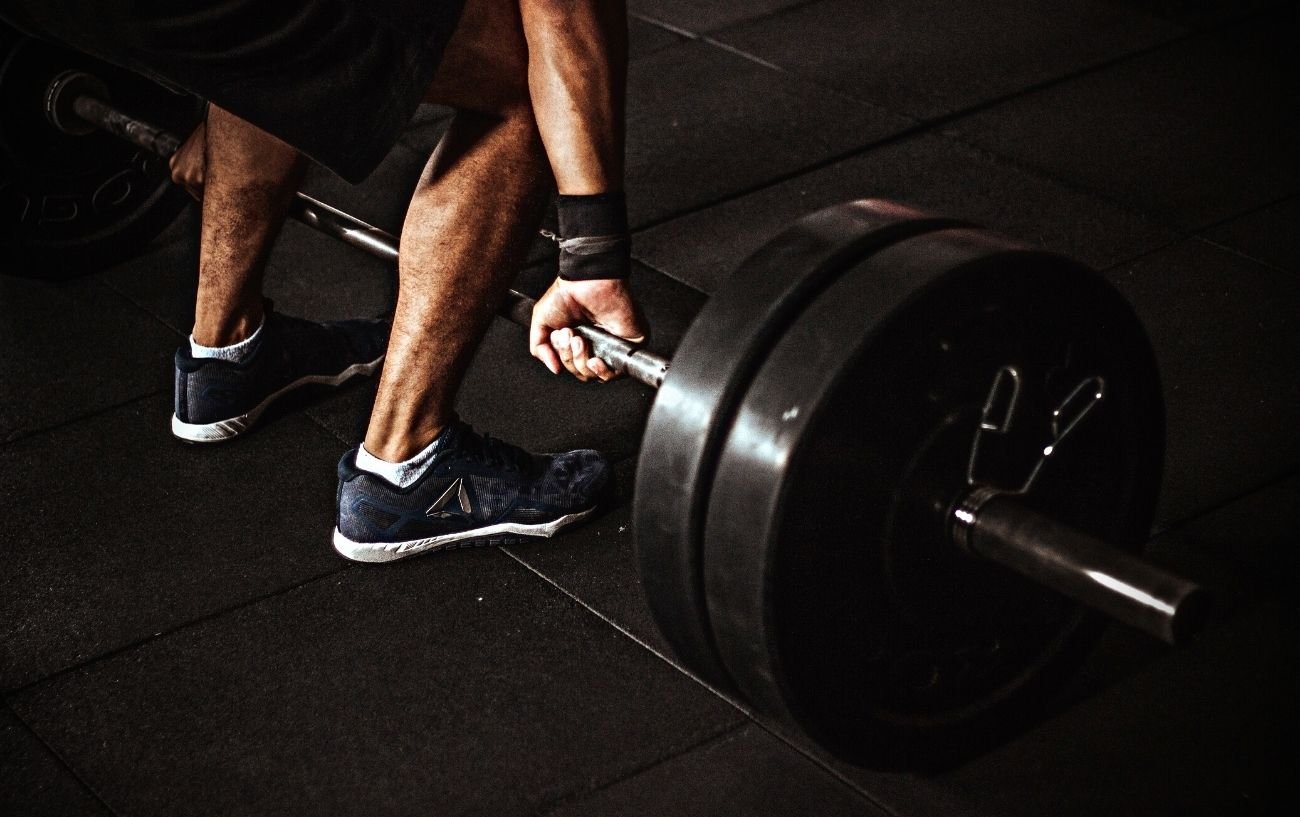
#31: Volume
Volume is an important workout term that refers to the total amount of workload you do in the gym. It is calculated by multiplying the weight that you lift (load) by the number of sets, reps, and exercises.
#32: Weekend Warrior
A weekend warrior is someone who works out extensively on the weekends but is rarely seen in the gym or exercising during the week.
Being a weekend warrior can increase the risk of injury because, a lot of times, weekend warriors tend to overdo it during their Saturday and Sunday workouts as a way to “make up” for skipping gym day all of the other days of the week.
#33: Work In
Someone may approach you when you are at the squat rack or on a weight bench or some other piece of strength training equipment and ask if they can “work in,” which means that they want to take turns sharing the equipment and alternate who gets to use it between sets.
Now that you have the lingo down, what about basic gym etiquette? For a guide to gym etiquette for your first trip, check out our article here.




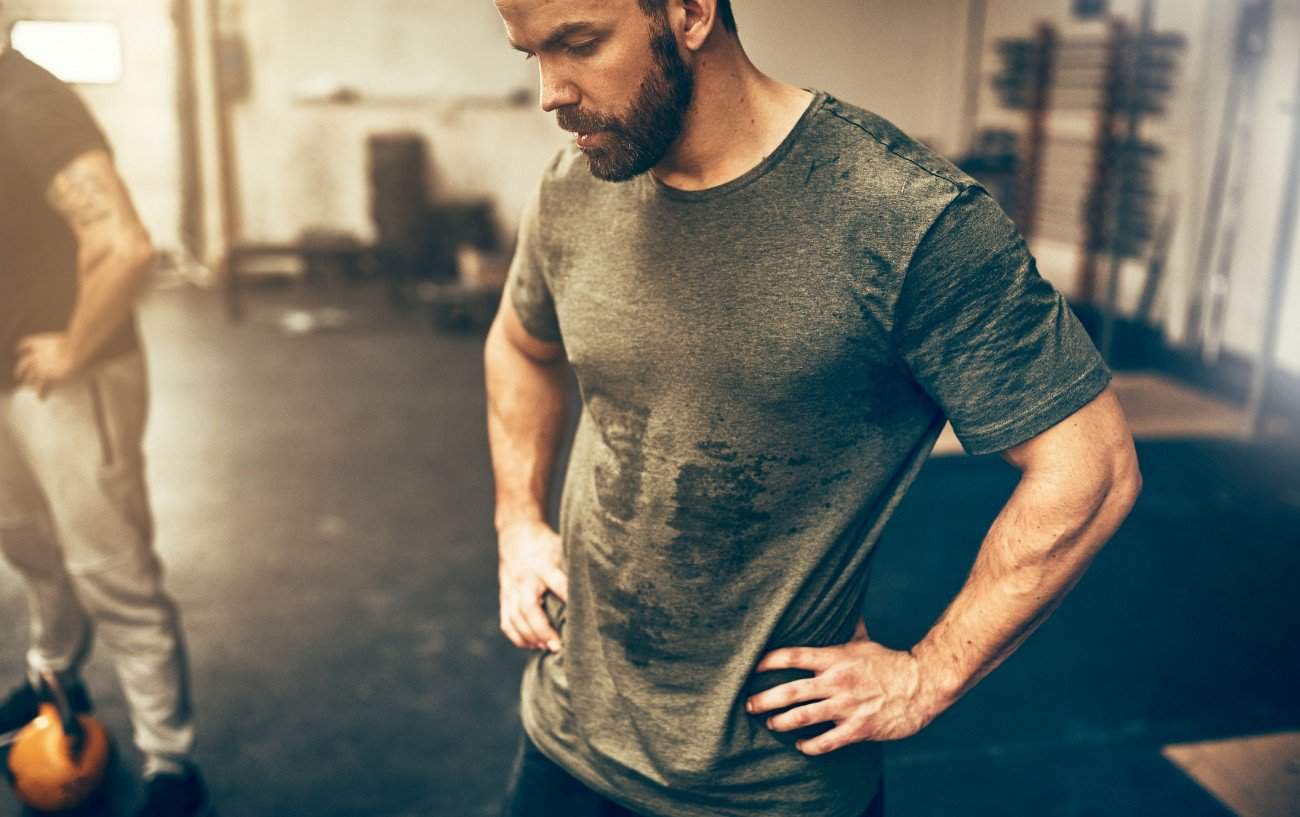









It’s not a One Repitition Maximum, it’s a one Rep Max